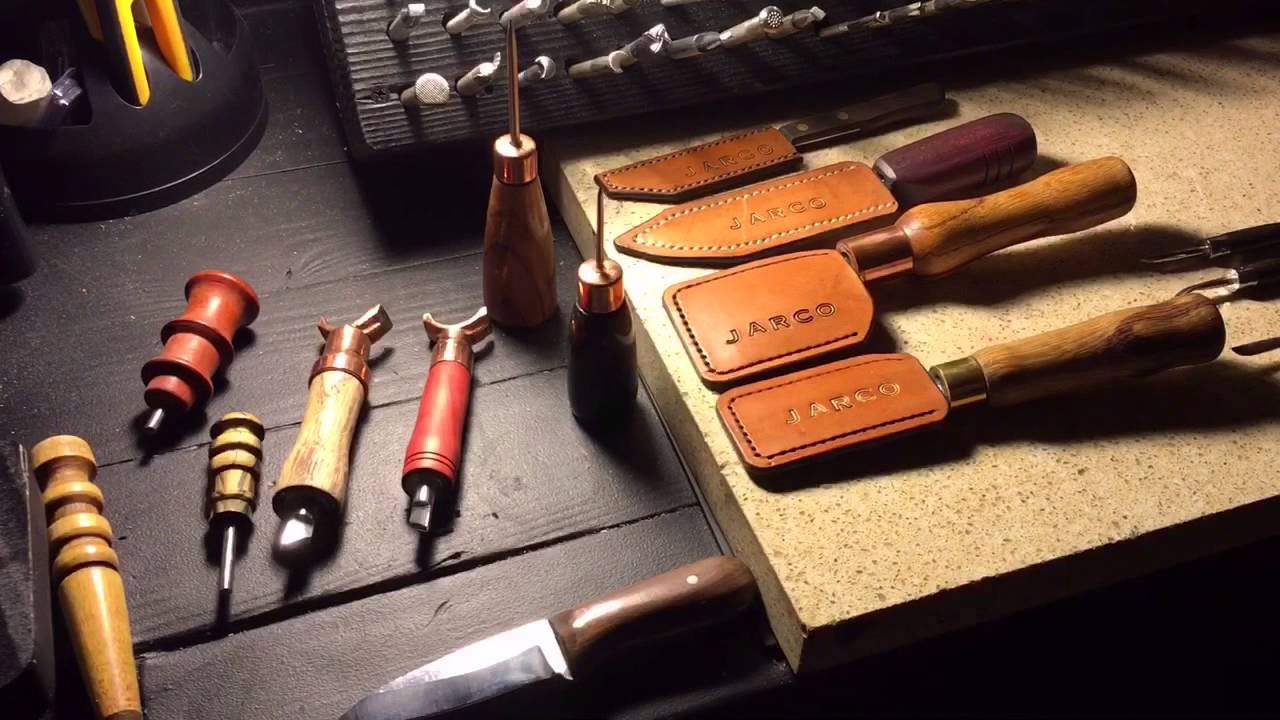Leather Craft ABC's
Introduction
Leather, one of mankind's oldest natural resources, is a foremost gift to man from Mother Nature. Without it man might not have survived.
The history of leather is closely merged with the progress of mankind. Long before man devised a written alphabet, he communicated through simple drawings or sign language. Many of these "messages" were done on skins of animals which he killed for food. With the skins of animals he was able to clothe and shelter himself. Modern archaeology has uncovered leather articles and artifacts from cultures dating back over 33 centuries and found them to be in an excellent state of preservation.
The ancient Romans used leather as currency, and the style and quality of a Romans sandals conveyed his status in society.
When man realized the importance of recording his thoughts and knowledge in books which he could carry and store more conveniently than stone tablets, he began to express himself on parchment leather pages.
During the Middle Ages, however, only the wealthy could afford boots, capes, saddles, etc. made of leather. Leather workmanship was limited to a very narrow section of society. A secretive lot, Leather Guildsmen closely guarded knowledge of their art which they handed down from father to son.
When Cortez conquered Mexico in the early 16th century, leather artistry came boldly into the New World. The Conquistadores brought horses and with them came the need for saddles and other horse gear. Spain had long been a leader in leather artistry and the skilled craftsmen who came over to the New Land coupled their vast knowledge with the inspiration they leaned from the beautiful floral patterns to be found all about them. Thus came the transition from basic geometric designs dating back to medieval times to the floral patterns of modern artistry.
Today anyone can enjoy leatherwork, the art of creating beautiful and useful articles of leather. Just as early man learned his "ABC's" on leather, this section is designed to teach you some of the basics of working with leather.
To decorate leather by carving, you need a small group of specially designed tools: swivel knife, camouflage, beveler, pear shader, veiner, seeder, backgrounder and mallet. These tools enable you to create basic leather articles. As your skill and enthusiasm grow you will want to add more tools to your collection. Of course you also need leather.
Leather is unique, different from any "cloth" put together by man, for it is the actual skin of an animal that grew as the animal grew. The skins of bovine animals (cows, oxen, etc.) provide most of the leather for carving. These skins must be vegetable tanned so that they will readily absorb moisture, allowing you to mold and form the leather easily.
Leather, one of mankind's oldest natural resources, is a foremost gift to man from Mother Nature. Without it man might not have survived.
The history of leather is closely merged with the progress of mankind. Long before man devised a written alphabet, he communicated through simple drawings or sign language. Many of these "messages" were done on skins of animals which he killed for food. With the skins of animals he was able to clothe and shelter himself. Modern archaeology has uncovered leather articles and artifacts from cultures dating back over 33 centuries and found them to be in an excellent state of preservation.
The ancient Romans used leather as currency, and the style and quality of a Romans sandals conveyed his status in society.
When man realized the importance of recording his thoughts and knowledge in books which he could carry and store more conveniently than stone tablets, he began to express himself on parchment leather pages.
During the Middle Ages, however, only the wealthy could afford boots, capes, saddles, etc. made of leather. Leather workmanship was limited to a very narrow section of society. A secretive lot, Leather Guildsmen closely guarded knowledge of their art which they handed down from father to son.
When Cortez conquered Mexico in the early 16th century, leather artistry came boldly into the New World. The Conquistadores brought horses and with them came the need for saddles and other horse gear. Spain had long been a leader in leather artistry and the skilled craftsmen who came over to the New Land coupled their vast knowledge with the inspiration they leaned from the beautiful floral patterns to be found all about them. Thus came the transition from basic geometric designs dating back to medieval times to the floral patterns of modern artistry.
Today anyone can enjoy leatherwork, the art of creating beautiful and useful articles of leather. Just as early man learned his "ABC's" on leather, this section is designed to teach you some of the basics of working with leather.
To decorate leather by carving, you need a small group of specially designed tools: swivel knife, camouflage, beveler, pear shader, veiner, seeder, backgrounder and mallet. These tools enable you to create basic leather articles. As your skill and enthusiasm grow you will want to add more tools to your collection. Of course you also need leather.
Leather is unique, different from any "cloth" put together by man, for it is the actual skin of an animal that grew as the animal grew. The skins of bovine animals (cows, oxen, etc.) provide most of the leather for carving. These skins must be vegetable tanned so that they will readily absorb moisture, allowing you to mold and form the leather easily.

